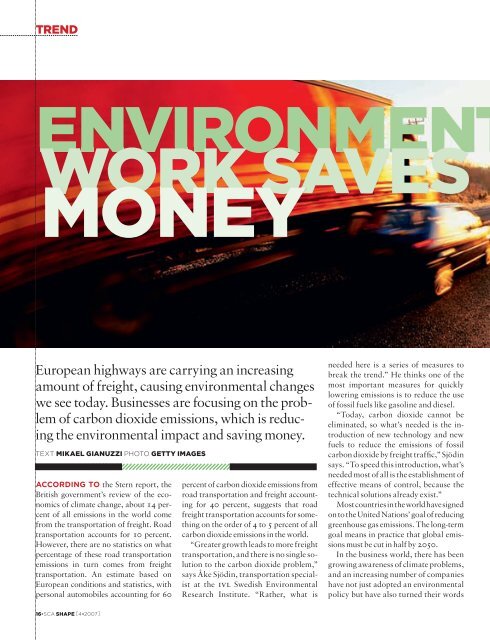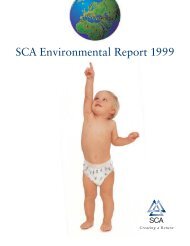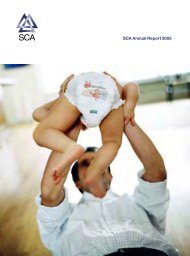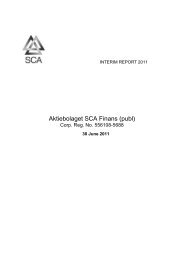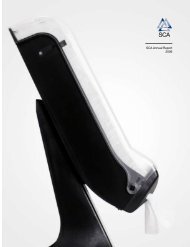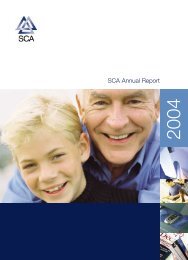SHAPE SHAPE SHAPE
SHAPE SHAPE SHAPE
SHAPE SHAPE SHAPE
Create successful ePaper yourself
Turn your PDF publications into a flip-book with our unique Google optimized e-Paper software.
TREND<br />
ENVIRONMENT<br />
WORK SAVES<br />
MONEY<br />
European highways are carrying an increasing<br />
amount of freight, causing environmental changes<br />
we see today. Businesses are focusing on the problem<br />
of carbon dioxide emissions, which is reducing<br />
the environmental impact and saving money.<br />
TEXT MIKAEL GIANUZZI PHOTO GETTY IMAGES<br />
ACCORDING TO the Stern report, the<br />
British government’s review of the economics<br />
of climate change, about 14 percent<br />
of all emissions in the world come<br />
from the transportation of freight. Road<br />
transportation accounts for 10 percent.<br />
However, there are no statistics on what<br />
percentage of these road transportation<br />
emissions in turn comes from freight<br />
transportation. An estimate based on<br />
European conditions and statistics, with<br />
personal automobiles accounting for 60<br />
16*SCA <strong>SHAPE</strong> [4*2007]<br />
percent of carbon dioxide emissions from<br />
road transportation and freight accounting<br />
for 40 percent, suggests that road<br />
freight transportation accounts for something<br />
on the order of 4 to 5 percent of all<br />
carbon dioxide emissions in the world.<br />
“Greater growth leads to more freight<br />
transportation, and there is no single solution<br />
to the carbon dioxide problem,”<br />
says Åke Sjödin, transportation specialist<br />
at the ivl Swedish Environmental<br />
Research Institute. “Rather, what is<br />
needed here is a series of measures to<br />
break the trend.” He thinks one of the<br />
most important measures for quickly<br />
lowering emissions is to reduce the use<br />
of fossil fuels like gasoline and diesel.<br />
“Today, carbon dioxide cannot be<br />
eliminated, so what’s needed is the introduction<br />
of new technology and new<br />
fuels to reduce the emissions of fossil<br />
carbon dioxide by freight traffi c,” Sjödin<br />
says. “To speed this introduction, what’s<br />
needed most of all is the establishment of<br />
effective means of control, because the<br />
technical solutions already exist.”<br />
Most countries in the world have signed<br />
on to the United Nations’ goal of reducing<br />
greenhouse gas emissions. The long-term<br />
goal means in practice that global emissions<br />
must be cut in half by 2050.<br />
In the business world, there has been<br />
growing awareness of climate problems,<br />
and an increasing number of companies<br />
have not just adopted an environmental<br />
policy but have also turned their words


